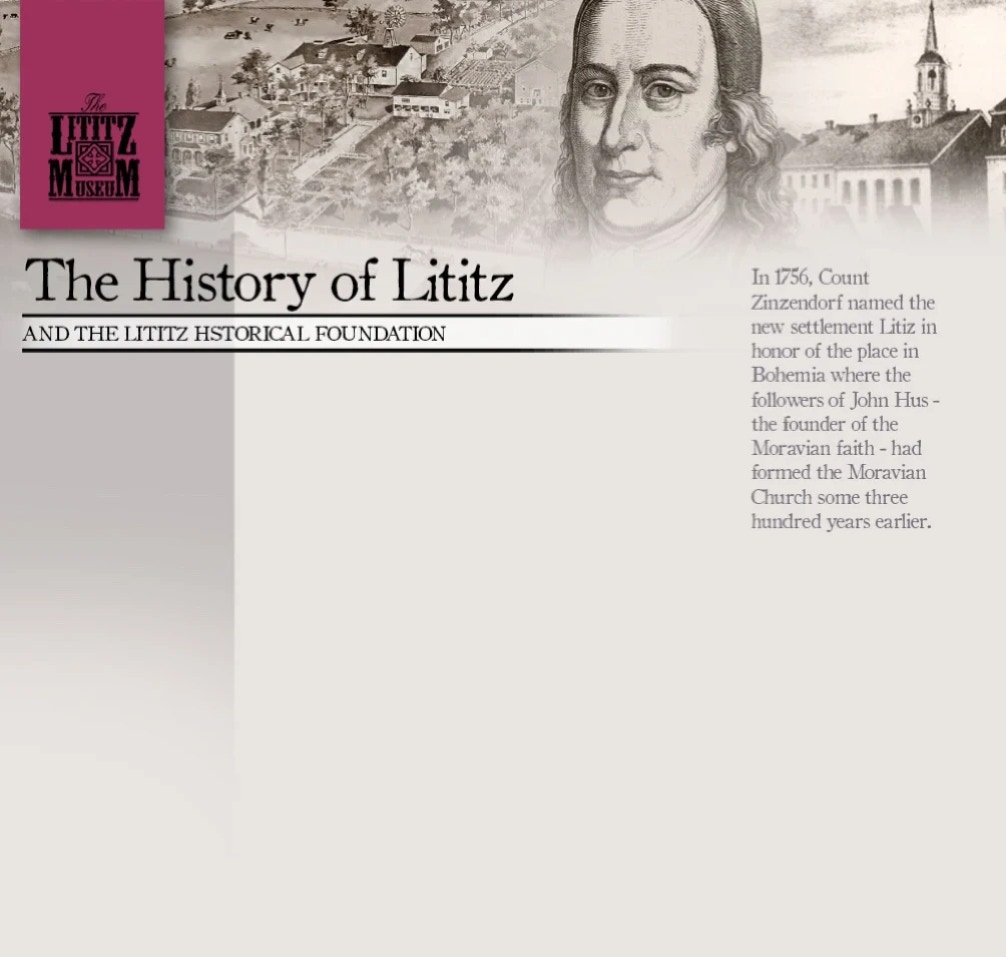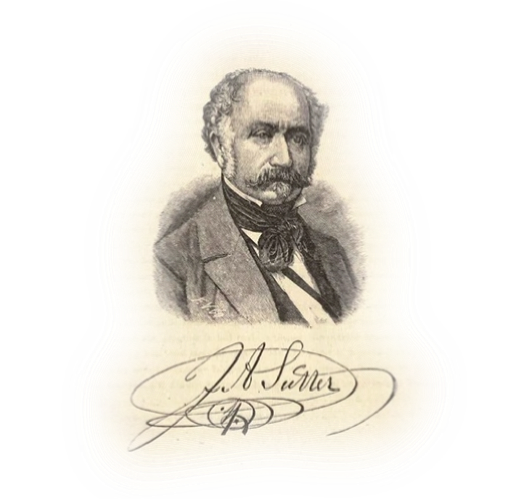
The history of Lititz, which for many years was coincident with that of the Moravian Congregation, begins in 1742, with a visit of Count Nicholas Louis von Zinzendorf, patron of the renewed Moravian Church, to the house of Jacob Huber, about a mile north of the present Borough, where the Count delivered an address on the evening of December 2, to some of the neighboring farmers. The Huber house is still standing, and has been marked by the Lancaster County Historical Society, with a tablet commemorating the momentous visit.
John George Klein, Huber's nearest neighbor, failed to attend the meeting on account of a prejudice which he held against Zinzendorf; but his conscience kept him awake all night because of his conduct, for it was a time of religious awakening among the Pennsylvania Germans, brought about, largely, by the preaching of itinerant ministers from the Moravian settlement of Bethlehem, who for several years had been holding services in the vicinity. The next day Klein followed Zinzendorf to Lancaster, heard him preach in the courthouse, and was moved-so deeply, that the whole course of his life was changed.
As a result of Zinzendorf's visit, a resident Moravian minister was sent to Warwick Township, where he carried on pastoral work with much success, also conducting work among the Reformed at Muddy Creek who were without the benefit of pastoral care from their own denomination.
LITITZ HISTORICAL FOUNDATION
In 1961, a group of dedicated Lititz residents combined efforts to preserve the rich history of this area; the Lititz Historical Foundation, a non-profit organization, which includes the Lititz Museum and the Johannes Mueller House, was created.
Visitors to the Lititz Museum and Johannes Mueller House learn a history rich in creativity. The important contributions made in Lititz are displayed through the many artifacts and exhibits, some of which change on a regular basis, making each visit an adventure.
Whether you're looking for artifacts from the very first inhabitants of the Lititz area--the Native Americans, an intriguing display of Frakturs and stitchery, a historic Moravian home complete with memorabilia of family life, or a replica of Gen. John Sutter’s bedroom, there's something here that will inspire YOU!
The displays within the museum, which is housed in the Christian Schropp home from 1793, provide just the right atmosphere for a trip in time back to the late 1700s in the Moravian society of Lititz. An illustrated timeline pictures the growth of Lititz from Indian settlements through the incorporation of the present Borough system. The Sutter Room, dedicated to General John Sutter, founder of Sacramento, California, a resident of Lititz from 1871 to 1880, is furnished with items from his home. Other rooms throughout the museum offer items seen nowhere else in the world.
Next door, in the Johannes Mueller House, our friendly and knowledgeable costumed docents lead visitors through the 1792 home, offering a captivating glimpse at what everyday life was like for an 18th century tradesman and his family in a closed Moravian settlement. The house retains its original architectural character and has been carefully restored with hundreds of traditional items from the late 1700s and early 1800s. The items are all family heirlooms that have been lovingly passed down through generations of Lititz families and donated to the foundation so that others may explore the diverse historical, regional and social traditions of the early Moravian settlers.
© 2024-25 Lititz Historical Foundation All Rights Reserved.
Designed by Penny Lane Graphics www.plgraphics.com



